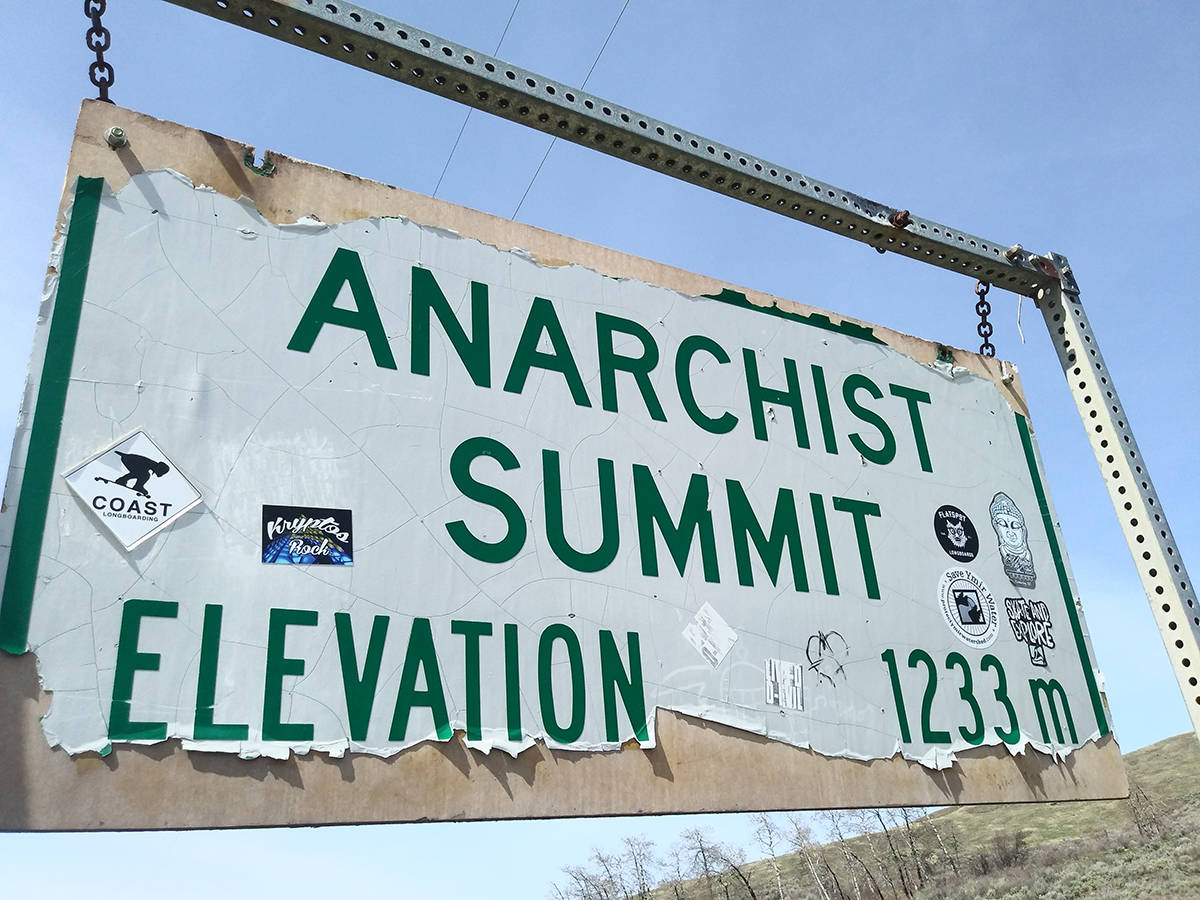A series on West Kootenay/Boundary place names
Anarchist Mountain, between Rock Creek and Osoyoos, boasts one of the most unique place names in BC. But the usual explanation for its origin is wrong.
Helen and G.P.V. Akrigg wrote in their classic book British Columbia Place Names (Third Edition, 1997) that the mountain was named “After Richard G. Sidley, a wild Irishman who arrived in the Osoyoos district around 1889. His extreme political views ultimately resulted in cancellation of his appointments as justice of the peace and customs officer at Sidley.”
Sidley did live on the mountain and chose its name, but he was not its namesake. While he was in fact Irish, he probably would have been bemused to hear himself described as wild and his political views labelled extreme.
The Akriggs’ source was a 1945 manuscript by Rupert W. Haggen, entitled Origin of Place Names in Boundary District. Haggen said Sidley “held, for his time, somewhat advanced political views; he was often called an anarchist, and this plateau became known locally as ‘the anarchist’s mountain.’ Local officialdom eventually relieved him of his posts.”
How Haggen came to believe these things is unknown.
Sidley reportedly began homesteading in the area in the 1880s, but the earliest actual sign of him is his appointment as a justice of the peace in July 1891, described by the Vancouver Daily World as a “very popular” move. He resigned in 1910.
He became postmaster of his namesake post office on Sept. 1, 1895 and held that job until its closure on Sept. 30, 1913 in favour of rural mail delivery.
The exact dates of his service as customs agent are not clear.
Nothing suggests he was fired from any of his posts, although he was critical of the work of Judge W.W. Spinks and laid a formal complaint against him.
In 1908, Sidley was a delegate to a federal Liberal convention at Vernon, where he protested the re-nomination of Greenwood’s Duncan Ross as candidate for Yale-Cariboo. Sidley was ejected from the meeting. He said Ross had no chance of winning the election and was proven right.
The mountain, meanwhile, was first mentioned in the Victoria Daily Times of June 25, 1892: “There are 16 new settlers on Anarchist mountain — between Osoyoos and Myers creek.”
The earliest explanation of its name appeared in the same newspaper on May 14, 1894: “Anarchist mountain acquired its unpleasing name from the fact that a rather tough character who once lived there, but now makes his home on the Colville reservation, carried a stick of dynamite around in his top boot. When asked why he did so he said he was an anarchist.”
The Vancouver Daily World of May 3, 1899 identified the man: “Anarchist Mountain was named by R.G. Sidley, a well-known rancher there, after an eccentric prospector named John Haywood, who used to carry dynamite for blasting in his boots.”
Haywood was more than eccentric. Trouble arose in June 1895, when his bull repeatedly found its way onto the field of neighbour Lucian Tedrow, who field suit. Before the matter came to trial, Haywood was arrested for stealing cattle from Frank Edwards and taken before Sidley and C.A.R. Lambly, acting as justices of the peace.
“It is generally understood that the case is a strong one against him,” wrote the Midway Advance.
However, the matter was adjourned for a few days so further witnesses could be heard. Unable to raise $600 in bail, Haywood was remanded to the lockup in Osoyoos, where “he was given every latitude by Mr. Lambly.”
Haywood took advantage of his jailer’s generosity and skipped town early the next morning, heading across the border.
A farmhand soon discovered an animal hide hanging from Sidley’s gate, with an abusive note attached. The next day, one of Tedrow’s bulls was found dead with seven bullet holes in it. A note in Haywood’s writing was found, indicating that “certain men better keep out of sight.” It was signed “Jack Revenge.”
Sidley arrested Haywood’s son, P. Dennis, who was found nearby, but he doesn’t appear to have been charged.
“Feeling on the mountain is very strong,” the Advance reported. “The official negligence in permitting so notorious a character to escape is severely criticized.”
When Tedrow’s lawsuit against Haywood came before Judge Spinks in Osoyoos, Haywood did not appear and a default judgement of $305.50 plus costs was entered.
It’s not known what became of Haywood. Sidley died on his ranch in 1924, age 69, and was buried at Bridesville.
The notion that Anarchist Mountain might have been named for a cattle thief (or thieves) was put forth by Lyn Hancock as part of a series for Tourism British Columbia written in 1977. After recounting the usual bit about “Dick Sidley, a wild Irish radical of extreme political views,” she added: “Another story suggests it was not Sidley who was the anarchist but a gang of horse rustling outlaws that roamed the mountain. Sidley called the outlaws the anarchists.”
However, Hancock’s source is unclear.

